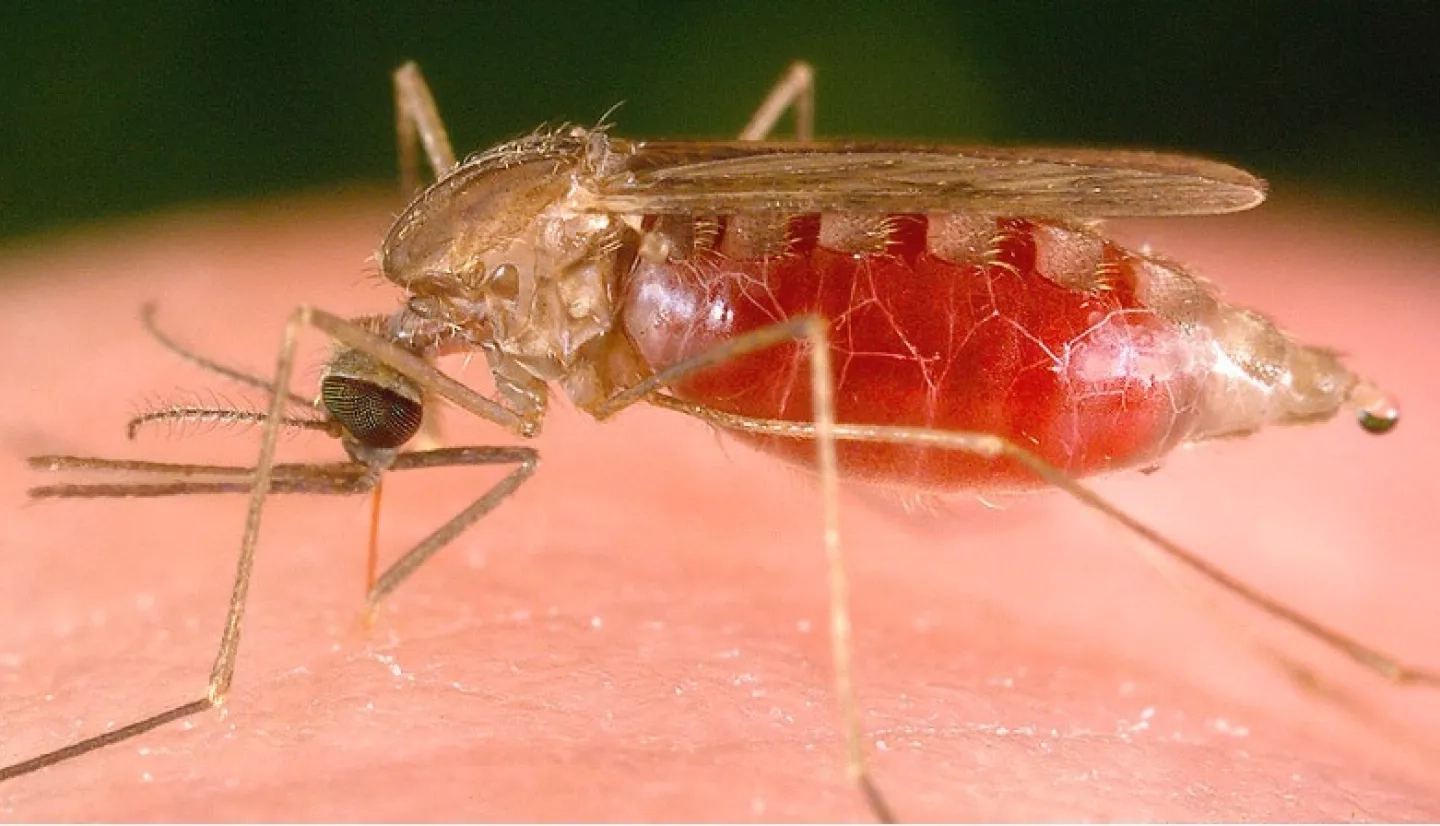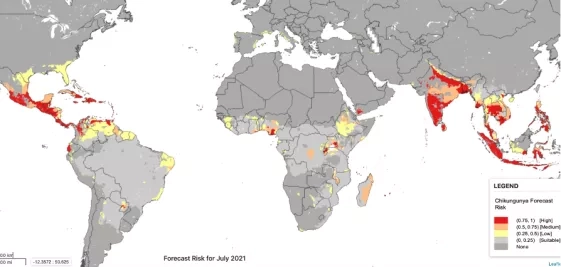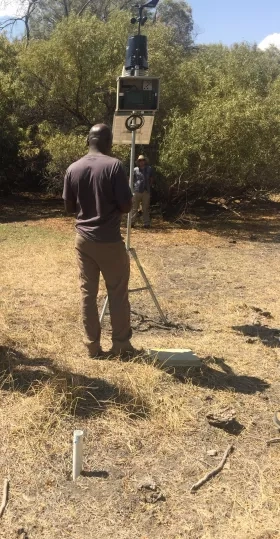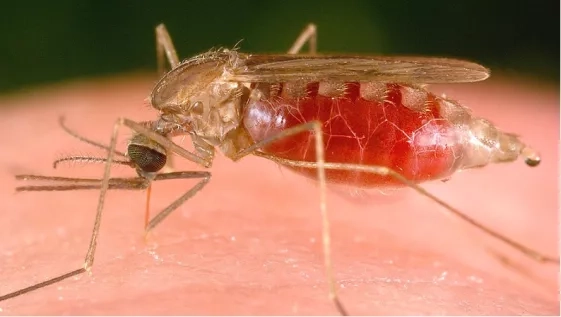From the U.S. Department of Defense to Ministries of Health in sub-Saharan Africa, communities around the world are relying on NASA research and satellite data to better face the threat of mosquitoes and the diseases they can carry. NASA’s fleet of Earth-observing satellites provides a unique vantage point on the habitats that mosquitoes prefer – and where the geographic expansion of these mosquito habitats may increase the risk of disease exposure.
This is an urgent task, as up to 700 million people become infected with a mosquito-borne disease every year. And as climate variability and change drives temperatures higher on Earth, it is even easier for mosquitoes to find warm places to live and breed. This year, National Mosquito Control Awareness Week 2021 will be held from June 20-26, raising awareness about the impacts that mosquitoes can have on human health and efforts to protect the public from this threat. But NASA researchers are studying mosquitoes’ movements all year round. Several projects with NASA’s Health and Air Quality program area are currently advancing the use of NASA satellite data for public health decision-making, even creating new, easy-to-use platforms so the public can take action to avoid areas of highest mosquito activity.
Making Travel Picks with CHIKRisk
CHIKRisk is one such platform, created by a NASA-funded team for the chikungunya virus. This virus, which is transmitted by Aedes mosquitoes, is rarely fatal, but often causes fever and debilitating joint pain. There is no vaccine, so the best way to avoid infection is to minimize exposure to Aedes mosquitoes that carry the virus. That is becoming increasingly difficult as the number of infected mosquitoes increases worldwide, with an estimated 1 million cases per year globally.
That is why the NASA team designed CHIKRisk App to be a publicly accessible mapping platform to monitor the chikungunya virus’ spread and provide climate-based risk maps for its occurrence up to three months in advance. CHIKRisk incorporates Earth observations like land surface temperature derived from the MODIS instrument on board NASA’s Terra satellite, humidity and soil moisture data from NASA’s Global Land Data Assimilation System (LDAS), and human population density data from NASA’s Socioeconomic Data and Applications Center and mosquito vector data from Walter Reed Biosystematics Unit (WRBU).
Understanding where the risk is greatest is crucial to reducing exposure and protecting public health. That is why the Department of Defense’s Global Emerging Infections Surveillance Section - Armed Forces Health Surveillance Branch, the World Health Organization, and the Pan American Health Organization now use a NASA-supported app called CHIKRisk to protect their own personnel, inform travel recommendations, and issue alerts related to the chikungunya virus.
Making Moves Against Malaria
But CHIKRisk is not the only example of Applied Sciences work to tracks mosquitoes – and the diseases they carry – from space. John Beck, a research scientist with the University of Alabama in Huntsville, is leading a Health and Air Quality team collaborating with the Centers for Disease Control and Prevention (CDC) to enhance malaria control decision-making in sub-Saharan Africa with NASA Earth observations.
Malaria is a fever-inducing illness caused by the Plasmodium parasite, transmitted by Anopheles mosquitoes. According to the World Health Organization, there were 229 million malaria cases and 409,000 deaths in 2019. To address global challenges like malaria, more than 60 countries, the CDC, and the European Union rely on a health management information system called District Health Information Software 2 (DHIS2) to provide vital health data and support disease-control decision-making. Once COVID international travel restrictions are lifted, Beck’s team is looking forward to working with local stakeholders, such as possibly the Ministry of Health officials from Sierra Leone, Uganda and Burkina Faso, to incorporate vital information into the platform on environmental factors that can affect the spread of malaria.
Satellite data, like local temperature and vegetation conditions from the Moderate Resolution Imaging Spectroradiometer (MODIS) instrument on board NASA’s Terra and Aqua satellites, can offer decision-makers a better picture of where infected mosquitoes might be spreading the disease. Beck’s team is currently working with project partners to test how this more accurate risk assessment can help inform prevention strategies, with plans for the results to be fully operational by the end of 2022.
Collaborating Across Geographies
When so many scientists are focused on different projects, sometimes it makes sense to join forces. In fact, researchers from several different Health and Air Quality projects worked together to produce a paper in the Trends in Parasitology journal, titled Satellite Observations and Malaria: New Opportunities for Research and Applications.
NASA researchers Tatiana Loboda, Mike Wimberly, and William Pan each lead projects devoted to improving the understanding of mosquito-borne diseases, but with different geographic focuses. Pan’s team, for example, used multiple layers of data from LDAS to develop a Malaria Early Warning System for Peru capable of forecasting malaria outbreaks up to 12 weeks in advance. Wimberly’s team developed the Arbovirus Monitoring and Prediction (ArboMAP) system for real-time prediction of human West Nile virus cases in South Dakota, relying on weather and mosquito data provided by NASA satellites and mosquito control districts. Loboda's group focused on mosquitoes in Myanmar and are preparing to deploy the Myanmar Malaria Early Warning System they developed, which includes data from the joint NASA and U.S. Geological Survey Landsat satellite mission.
All three researchers contributed to this March 2021 publication, highlighting that detailed Earth observations from NASA satellites can provide decision-makers with precise, localized mapping of mosquito habitats to support global efforts toward malaria control, elimination, and eradication. High-resolution land use and land cover maps can even shed light on human activities, like agriculture and deforestation, that affect mosquito habitats and exposure to mosquito bites.
“This publication leverages the expertise of three NASA-funded researchers working on different mosquito-borne diseases in diverse geographic regions,” said Helena Chapman, associate program manager of the Health and Air Quality program. “It shows the importance of national and international collaborations to meet the challenges of mosquito control to protect human health – and the opportunities we have to benefit from shared expertise.”
The Global Learning and Observations to Benefit the Environment (GLOBE) Program is also inviting the public to share photos of mosquito habitats to help scientists learn more about mosquito-borne diseases and aide machine learning research during the upcoming Mosquito Habitat Photo Challenge, July 25 to August 25, 2021. The public can read more about this current effort in the story Machine Learning and Your Citizen Science Data.
NASA sponsors The GLOBE Program, an international science and education program that provides students and the public with the opportunity to participate in data collection and the scientific process. NASA GLOBE Observer is a free smartphone app that lets anybody make several citizen science observations from the palm of their hand.
The American Mosquito Control Association is highlighting National Mosquito Control Awareness Week 2021, from June 20-26, to increase awareness about the impacts that mosquitoes can have on human health and the work being done to protect the public from this threat.







